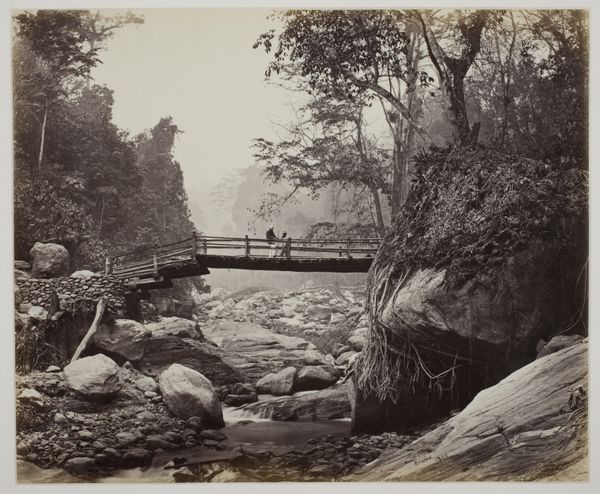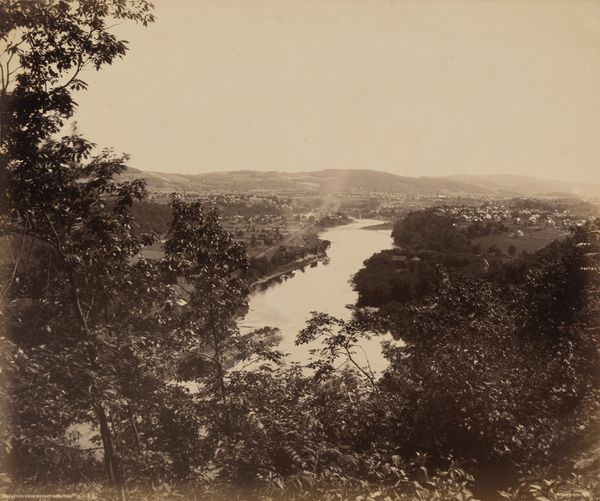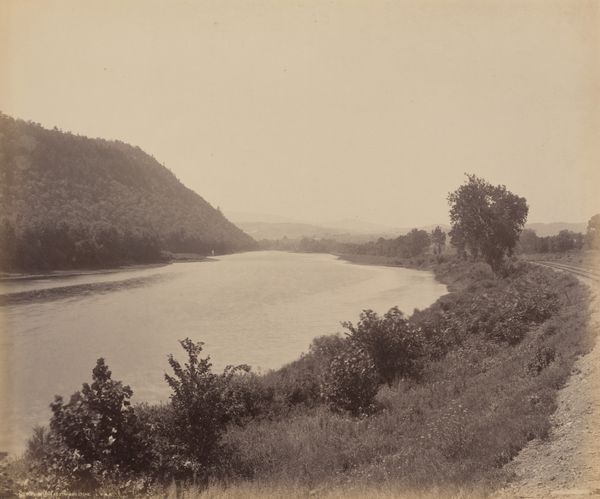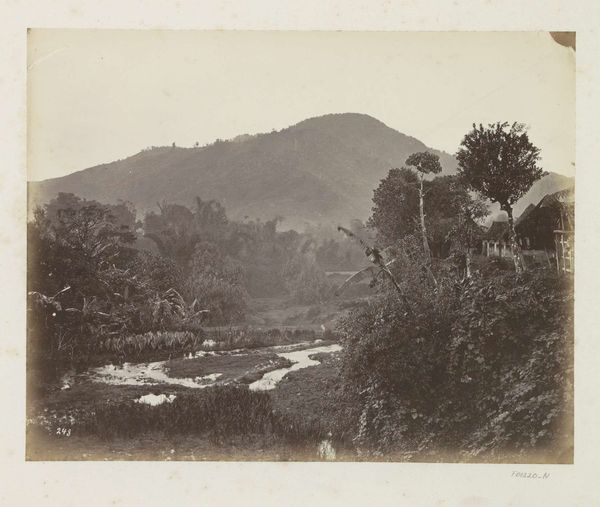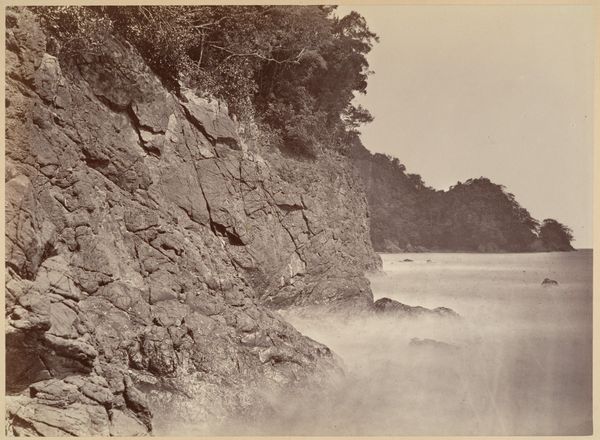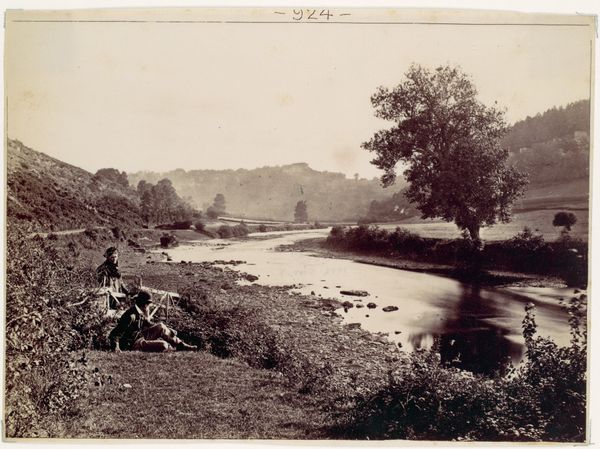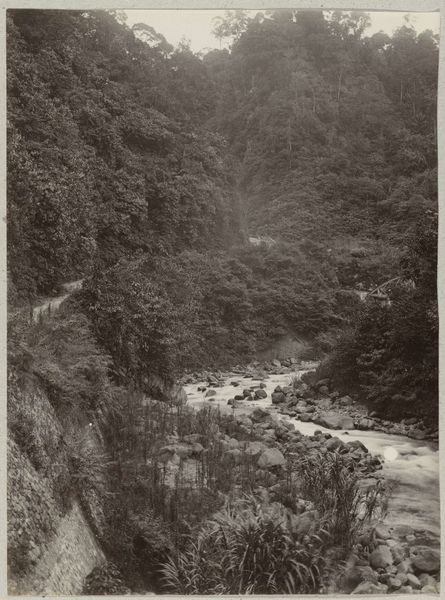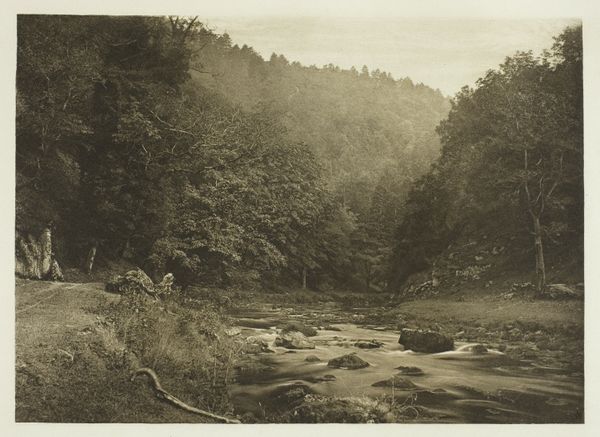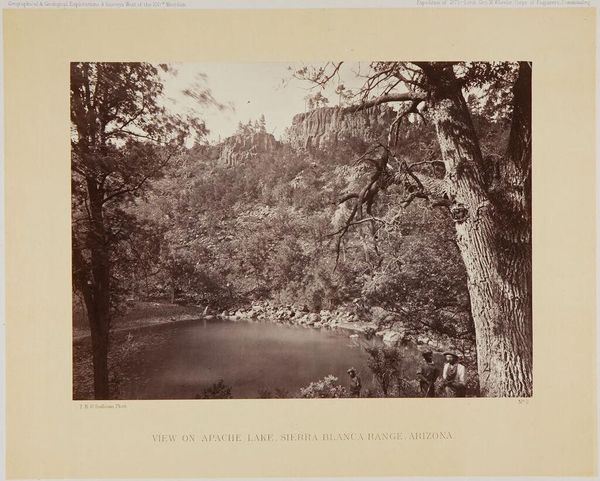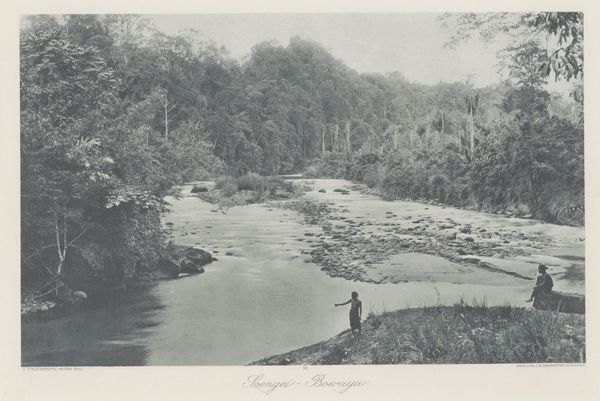
Suspension bridge on the Rangit river near Darjeeling, West Bengal, India 1868 - 1869
0:00
0:00
photography, gelatin-silver-print
#
16_19th-century
#
impressionism
#
landscape
#
river
#
nature
#
photography
#
orientalism
#
gelatin-silver-print
#
nature
Dimensions: height 233 mm, width 287 mm
Copyright: Rijks Museum: Open Domain
Curator: Here we have Samuel Bourne’s gelatin-silver print, “Suspension bridge on the Rangit river near Darjeeling, West Bengal, India," dating from around 1868 to 1869. Editor: Immediately, I'm struck by the stark contrasts within the composition. The hazy distance against the sharp, detailed foreground foliage creates an intriguing visual tension. Curator: Yes, Bourne's use of light and shadow is certainly pronounced. Observe how the bridge acts as a compositional element, drawing the eye across the frame and into the hazy background. It functions almost as a threshold between defined space and indeterminate depth. Editor: Thinking about the materiality, this gelatin-silver process was key for photography at the time. Imagine Bourne, hauling bulky equipment through challenging terrain, producing these prints that aestheticize expansionist agendas in 19th century India. The silver itself became a resource extracted and deployed as evidence and object in a colonial system. Curator: Indeed, we see the merging of artistic skill and colonial enterprise. But from a formal standpoint, the composition adheres to a structured visual syntax. The path on the right, guiding our gaze; the bridge creating horizontal balance with the towering trees...it's all carefully orchestrated. The scale is cleverly used to underscore the bridge as a link between disparate terrains. Editor: And yet that calculated beauty reinforces power structures. The figures on the path feel minuscule in the composition. It hints at how landscape was perceived then. Vast resources, a manageable native population. Consider the labour and expense it must have taken to construct such a bridge then; a tangible symbol of imperial ambition manifested materially. Curator: One could interpret that figure scale as reflecting humanity's relationship with nature. A testament to something powerful. Editor: I'm more inclined to see this landscape tradition as framing people *within* power rather than just “nature.” I guess ultimately that divide underscores different approaches to interpreting art, doesn’t it? Curator: It certainly does, a point worth noting before we move along. The nuances within the work remain and generate further contemplation.
Comments
No comments
Be the first to comment and join the conversation on the ultimate creative platform.
